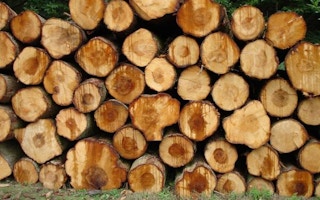Green alternatives such as wind and solar may be touted as the solution to our environmental problems such as climate change, but how green are they really?
Wind and solar rely on technologically-sophisticated industries and infrastructure including rare earth batteries, highly-processed composite building materials, computer controlled switching and balancing programs and continuous maintenance.
There are natural alternatives to such technologies that are arguably “greener”. So, why aren’t we looking to make our technologies truly green?
Wind, solar … wood
Fire is probably the greatest discovery of humankind, if not the discovery that set us on the path to becoming civilised and social.
Wood still fuels the energy needs of millions in Africa, China and India. Perhaps surprisingly, it also fuels the energy needs of many thousands in Europe, Canada, the US and even Australia. Why do we in the developed word seem to have forgotten its power?
Wood fuel has numerous advantages over wind or solar. Wood can be grown right where it is needed – even along the boundaries of residential properties, around commercial enterprises or even in urban and peri-urban parks.
While it is growing, trees look good and provide a temporary home for birds and other wildlife – certainly not something that can be said for every wind farm.
A continuous supply of winter home heating can be produced by selecting relevant tree species (or group of species) and progressively planting them around a “quarter acre” residential block. Each year, one seventh of the boundary could be planted and after seven years the owner could begin harvesting, drying, burning and replanting the oldest trees.
Changing the trees species and the harvesting rotation lengths could allow co-production of products such as honey or flowers without ultimately endangering fuel reserves. Such a system would however require some management. Neighbourhood groups could coordinate their individual plantings and use of the trees to encourage community projects, including planting in parks, that benefit from trees at different stages of their life or allow longer life spans for selected trees.
Such a system could continue pretty much indefinitely and may rightly be classified as sustainable yield: renewable energy with very little need for unnatural elements or practises.
But somehow the use of wood as a fuel source is specifically included from a range of renewable energy and environmental improvement schemes, despite its advantages.
Timber!
The timber industry could benefit from similar rethinking.
Plantations are gaining a reputation as the “green” option for the production of solid timber for use in construction or high-value products.
The management required in plantations includes ploughing, ripping, spraying and fertilising for preparation, followed by more spraying and fertilising over time. Exotic species are used to avoid losses from local pests and diseases. This intensive management is designed to ensure that final harvest revenues don’t happen so far into the future that the “time cost of money” erodes the net profit.
While not as intensive or invasive as agriculture, and orders of magnitude less intensive than the industries associated with plastic, steel or concrete products, plantations are never-the-less more intense and less natural than native forest management.
In native forests, local or endemic species are kept even though growth is slower. Fertiliser is not applied, partially because its cost cannot be justified but also because the local species are commonly adapted to local soil fertility. Similarly, weedicide application is rare.
Producing wood products in such a forest is slower, and to produce the same amount requires a larger area. One hectare of intensively managed plantation can produce the same amount of solid wood product as 30-to-50 hectares of native eucalypt forest.
But the managed native forest will have a greater diversity of tree sizes and stages, and only relatively small areas of disturbance. The vast majority of the forest simply grows and changes in a natural way, which is orders of magnitude better for birds and animals.
There is a strong branch of forest management in Europe called “nature-based forestry” or “near natural silviculture” that attempts to make human induced disturbances during harvesting or regeneration as close to natural-like conditions as possible. Visitors need special training to detect the difference between the human induced changes and the natural ones.
But, like high-technology systems, plantations are seen as the “green” alternative to low-technology native forest management.
Green values
The “green” alternatives market has been captured by systems that require high levels of technology, energy inputs and processing.
Is the ultimate green goal is to leave nature altogether, replacing nature-based solution with technological ones – perhaps ultimately living in space stations powered by solar cells measured in kilometres?
Machines could make our air, water and nutrients out of raw mineral stocks mined from asteroid belts without impinging on natural earth at all. A “green” but precarious future totally reliant on sophisticated technology.
To be green and natural, we must re-engage with nature. Recall battles over battery chickens. The battle against that industry could not have commenced until the connection between the product (the egg) and the system (chickens in backyards or battery farms created by us) was re-established. Many urban children have never seen a farm or even touched a chicken.
Similarly a battle for green and natural alternatives can only be commenced once the connection between natural systems that produce goods and services are appreciated and compared with unnatural and energy demanding systems that they have been replaced by.
Cris Brack is the associate professor for forest measurement and management at Australian National University. This post originally appeared here.










